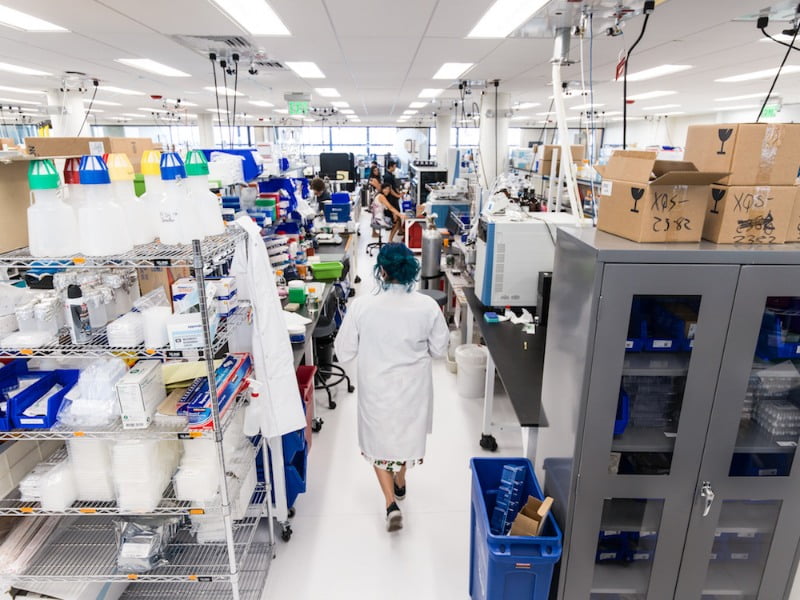The NSW Chief Scientist Hugh Durrant-Whyte last month unveiled $2.5 million in funding support to establish a Genome Foundry at Macquarie University – a so-called ‘biofoundry’. Australia does not currently have a Biofoundry, and this places the nation behind the pack when it comes next-generation biotechnologies.
The American synthetic biologist Tom Knight, who worked on ARPANET at MIT and founded the Ginkgo Bioworks in 2008, has described the emerging field of synthetic biology as “nanotechnology that works.”
Ginko is a commercial biofoundry based in the US. They design organisms for customers. Microbes that deploy metabolic pathways from other species to take a feedstock like sugar and turn it into a high-value chemical, or a fluorescent biosensor that goes green when an unwanted compound enters the production line.

Back in 2016, the Rural Industries Research and Development Corporation predicted synthetic biology would make up 22 per cent of the global trillion-dollar chemical market by 2025.
When announcing the biofoundry investment, Prof Durrant-Whyte said “the economic impact of synthetic biology technology in the agricultural, healthcare, biofuels and chemicals sectors alone could be between US$700 billion to US$6 trillion per year by 2025.” In three years’ time those estimates will be larger again.
And yet it is only now that are we seeing domestic million dollar investments supporting the establishment of an Australian biofoundry. The investment is very welcome, there’s no doubt about that, but its scale needs to be placed in context.
The Shenzen provincial government invested US$150 million into a synthetic biology laboratory last year, while a €25 million investment in a synthetic biology laboratory in the Netherlands is underway. Both were announced in passing during presentations at the 7th International Yeast 2.0 conference in Sydney last year.
A proper biofoundry is a $20 million proposition, and while the NSW Chief Scientist investment is a very important first step, it’s just that; a first step.
An academic biofoundry is different to a commercial one. Principally, because an academic biofoundry seeks to discover new ways of doing things.
Commercial biofoundries are the high-throughput spinning jennies of biology, and until Australia has an academic foundry, we won’t be getting a commercial one.
Not only do academic biofoundries allow for fundamental process innovation, they concentrate technical expertise and build the necessary human capital for starting and staffing a commercial biofoundry.
It is not until you discover a new efflux pump that you can harness it to commercialise novel biosensors.
Australia is never going to match China or the US dollar-for-dollar on research investment in synthetic biology. Yet if Australia isn’t strategic about investing now, it will be importing for years to come.
And not only that, but synthetic biology is on a collision course with artificial intelligence, another area where Australian government investment is sorely lacking.
Biology is base-4, artificial intelligence is base-2, and when it comes to screening libraries of genetic code for desirable traits you might want to deploy, or mapping functional metabolic pathways in what is effectively an infinite horizon of possibilities – artificial intelligence is going to win out.
AI’s going to win out in biofoundry deployments, where high-throughput capabilities can screen large combinations and permutations of metabolic combinations, and that data can then train AI agents for improved decision-making the next time round.
If that sounds overly technical, it’s probably best phrased this way: humanity has taken the better half of 10,000 years to breed the domesticated organisms we currently rely on. In the coming decades 10,000 years’ worth of breeding will be half a day’s work.
Those that own the IP for the synthetic biotechnologies and artificial intelligence algorithms that enable this transformation will capture a massive economic Australia. Where the Australian Council of Learned Academies only released a Synthetic Biology horizon scan last year (effectively a national situational awareness), the UK published their first synthetic biology roadmap in 2012.
As a consequence, the UK has a number of biofoundries throughout the country, each experimenting with different ways of doing things. These biofoundries were exploring options for a global alliance last year, Australia needs to be a part of this.
To participate in the future chemical, agricultural, pharmaceutical, or even information technology industries, will require Australia to build not one biofoundy, but a network of them around the country.
This nascent industry will eventually go through a period of international standard setting and regulation formation, and if Australia wants to play any part in setting the rules for tomorrow’s biotechnologies, it needs to be a net contributor at this early stage.
It’s going to take a lot more than $2.5 million to buy that, but you have to start somewhere and NSW Chief Scientist has definitely done that.
Thom Dixon is Vice-President for the Australian Institute of International Affairs NSW and Research Fellow with Remi AI, an artificial intelligence company based in Australia and the US.
Do you know more? Contact James Riley via Email.
